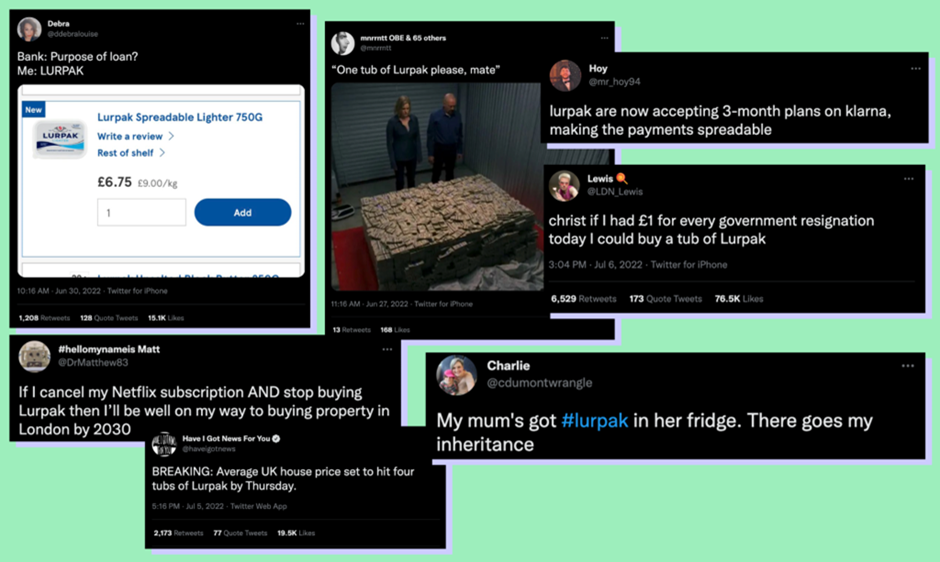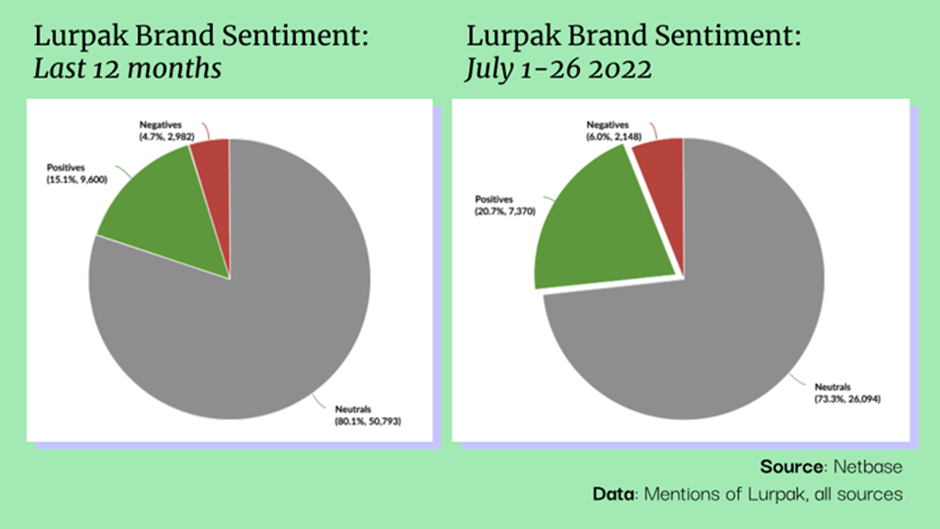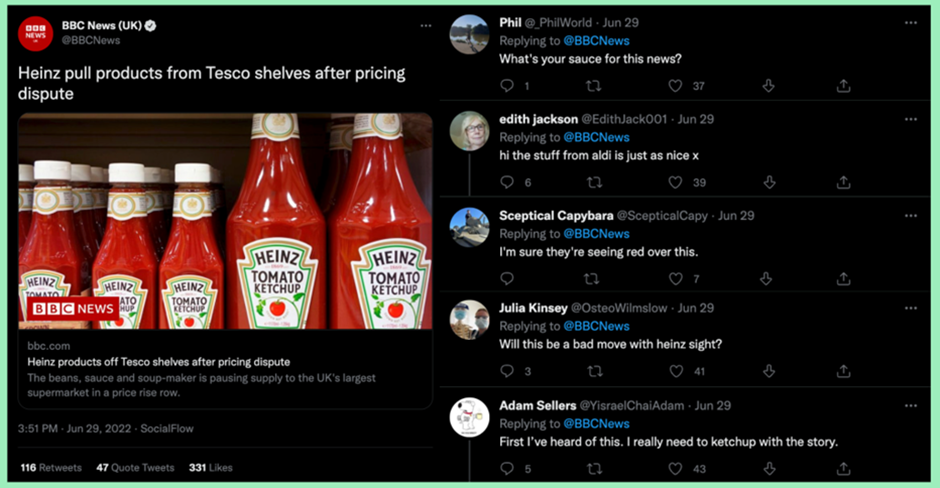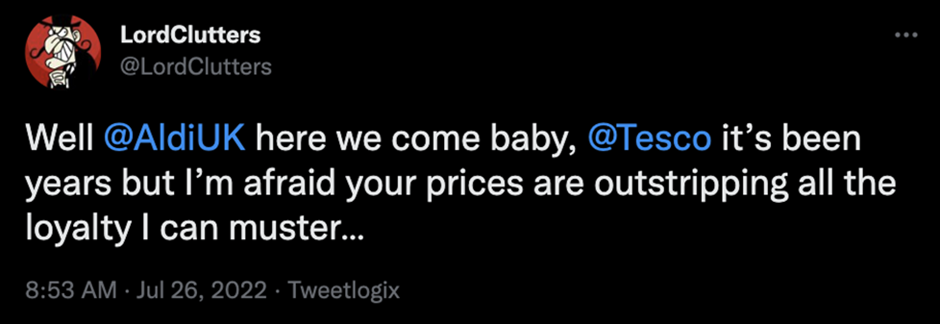
It’s time for marketing to step up its sustainability game
Alice Date and Lucy Baumgartner share the benefits of aligning marketing and sustainability teams for improved brand effectiveness and the environmental benefits of out-of-home

Born Social’s Emily Williams deep dives into the Lurpak meme and the cost of living crisis

Write a horror story in one sentence; “I saw a tub of Lurpak for £7 in my local Coop.”
If there was ever proof that we’re living out the darkest timeline, this might be it. This month the price of Lurpak Spreadable skyrocketed an average 33%, leading to a national outcry in the UK.
And while Lurpak genuinely has risen in price more than competitors (largely due to its higher oil content and the global price surge there) - it’s not the only product to do so. But, so far at least, it’s the only product to become a true cost of living meme.
But why? Will there be an impact on the brand long-term? Does the UK just really love spreadable butter? Let’s dive into the chaos…
It’s fair to say that Twitter has had a field day. After the news broke on mainstream media, with coverage on This Morning and Sky News, Lurpak became the poster-child for price increases and inflation.

Interestingly, Lurpak was only part of the story. It was bigger than that; in true UK form, spreadable butter was fused with everything from government resignations to house prices. The shared experience of increasing prices found an outlet in the dairy aisle, sharing in the bleak humour that a slice of buttered toast is now a serious investment.
If we take a step back, we can see the size of the social spike. Looking at total mentions during this period, it’s not hard to see where things took off. And of course, this was mainly on Twitter.

The peak was huge - especially for Lurpak, which on the whole enjoys a low level of risk on social (and indeed has been pretty inactive since 2021). But, as with a lot of trends and social flashpoints, this was short lived.
We’re already seeing this conversation die down, with search interest showing a similar story. Both are great examples of how these graphs need to be viewed in light of brand context; in isolation, you’d expect this domination to actually be good news for Lurpak, not bad.
But is it? People are angry at Lurpak as a brand, right? Well…. No, not really:

Comparing sentiment of the last 12 months with sentiment from July 2022, there’s actually a higher percentage of positive brand mentions during the spike. And Net Sentiment has also moved in a surprising direction, rising 2% to 55% in July 2022. Sentiment has highlighted what a well-loved brand Lurpak really is - with people asking how to replace their beloved spread at a more affordable price.
Perhaps due to the accumulated trauma of the last 2+ years, Lurpak became a light-hearted shorthand for inflation and price rises in the UK. The brand implications here look like a flash in the pan. Lurpak hasn’t been cancelled due to the price surge, in fact, far from it. To have a product where people are *so* outraged at price increases is a demonstration of its national brand love in the UK.
While there was underlying outrage, driven mainly by the tabloids, the conversation on social media was all about the shared joke. During a month where abortion rights were attacked, the planet was on fire, and the UK government finally fell, the cost of butter felt like light relief. When we talk about moments of shared culture, the cost of living crisis is one that really does connect us all. Over the coming months, it’s likely we’ll see similar moments bubble up, peak, and drop off, feeding the trend cycle on Twitter particularly.
This could be a sign of things to come. Tesco and Heinz have recently fallen out over price rises, with Tesco refusing to pass on the cost to consumers. But if supermarkets are unable to push back as we move forwards, it feels like Lurpak may just be the frontrunner as brands look to recoup their margins by raising prices. Though Heinz’ net sentiment took a hit (down to -27% in June, driven largely by news outlets), it quickly bounced back (+33% in July, source: Netbase).
On the BBC news tweet - the most engaged with post about the story, community reactions ranged from ketchup puns, to how there’s really no difference to Aldi or own-brand when it comes to beans. Strong parallels to the Lurpak situation.

So, is now the moment for supermarket own-brands to come into their own? Aldi reacted to the Lurpak news with their own response, highlighting their own brand Nordpak:

In fact, during July, Nordpak experienced a +911% increase in mentions, compared to June 2022 (Source: Netbase).
Average UK food bill: +£380 a year
Supermarket own-brand sales: +12%
Aldi sales: +7.5%
Lidl sales: +9.5%[2]
With UK supermarket inflation forecast to reach as high as 15%, supermarkets are looking to their own-brand products to capture consumers looking to save - and discounters like Lidl and Aldi are cashing in. Brands will need to work hard to keep customers paying a premium. For example, Unilever has taken a hit on its margins and is increasing brand marketing to keep customers loyal, but still prices have risen on average 11% across its portfolio.
It’s clear that customers are expecting price rises. While this may vary from sector to sector, customers are keenly aware that we’re entering tough economic waters. They’re expecting things to get bumpy, and it doesn’t look like this blame is going to fall directly on the brands themselves - so long as they’re doing what they can to limit passing on costs.
What’s more, we know that social can be a storm in a teacup. The huge spike in conversation around Lurpak has already died down, and the brand is still intact and just as loved as ever. Brands on social need to embrace this, and respond natively - giving back to their communities where possible, and simply not panicking.
And lastly, we’ll soon see which brands command real loyalty, and which ones customers will be willing to ditch. Brands need to remember that the ones that continue advertising during recessions are the ones that emerge stronger. Continuing to invest in brand advertising - perhaps at the expense of short term sales - is the ideal, according to Peter Field.
But, depending on their tolerance, brands will find some customers switching to more affordable alternatives. The coming months may start to impact even those who thought they were immune.

Time to stock up on Nordpak, perhaps?
I’ve been in digital my whole career, which now somehow spans over a decade. Starting out in copywriting, I quickly moved over to specialise in social, and have been focused on strategy for a range of clients ever since; from Jaguar Land Rover, to Pfizer, to fish and chip shops - and everything in between. I’ve been at Born for over 2 years now, and have led on some of our biggest strategy projects to date; including Primark, Guinness, and Facebook Workplace. What I love most is finding the unexpected answers to problems - and working with our clients to solve them in clever ways, together.
Looks like you need to create a Creativebrief account to perform this action.
Create account Sign inLooks like you need to create a Creativebrief account to perform this action.
Create account Sign in